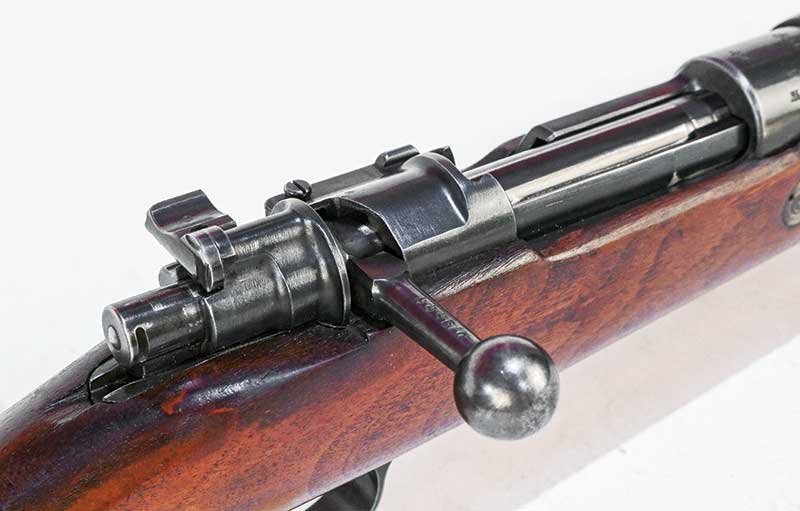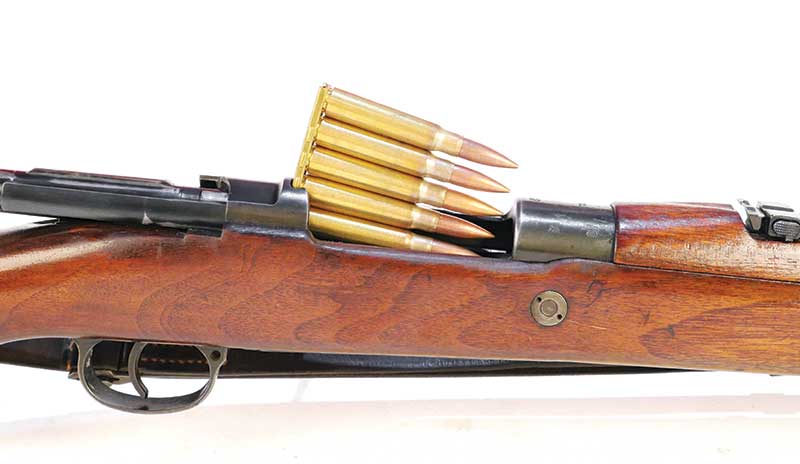In Person
In the flesh the gun was stubbier than a WWI-vintage G98 and the straight bolt handle was my first clue it wasn’t one of the ubiquitous Kar98k’s carried by the Wehrmacht throughout their many-splendored forays of wanton destruction. The weapon was in perfect condition and appeared unfired. Both the steel and furniture were liberally festooned with waffenamt proof marks.
Included with the weapon was a bayonet in a pristine sheath with matching frog dyed inexplicably deep blue. There was also an SA dagger and a box full of personal effects. Taken in total all these artifacts painted a most fascinating picture.







